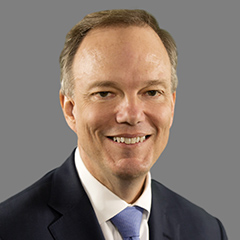I’m what you might call a lifer at Mathematica. I started here straight out of graduate school, excited about the challenge of trying to make the world a better place by applying research to critical public policy questions. I loved our mission, our work, and the people I got to call my colleagues. I still do. In fact, I still get excited to come to work on Monday mornings. Why? Because I get to work with a group of remarkably smart, talented teammates that are as committed to our mission and culture as I am. Being surrounded by my Mathematica colleagues every day has given me, for the past 29 years, a sense of belonging and feeling “at home.” The combination of loving one’s work and loving being at work is a feeling I want for everyone at Mathematica, and it’s a driving force behind our expanded efforts around diversity and inclusion.
There is no question in my mind that improving our efforts around diversity and inclusion is the right thing to do. When we set out to look at these issues, we did so in typical Mathematica fashion, gathering both qualitative and quantitative data, running regression analyses, and controlling for a wide variety of variables. We found workplace practices—like our commitment to workplace flexibility, which helps parents balance work and family obligations—that were working well for most all employees. At the same time, we found practices where demographics were playing a role in whether people felt something was working well, such as opportunities for mentoring and supervisory experiences. We also found that a lack of diversity in our leadership team is an underlying area of concern.
My key takeaway? We can—and must—do better, and when we do, our workplace culture, our work, and our industry will be better for it. Our company is our people, and our reputation for quality work has always been based on our high-caliber staff. With so much evidence pointing to the benefits of diversity in how groups and companies perform, we owe it to ourselves, our partners and clients, and the people whose lives we are working to improve to get this right.
That’s why we created a new Chief Diversity Officer position to help address key areas where we know we can make a difference. We’ve committed to providing leadership with unconscious bias training to improve awareness and understanding of key areas where we’re missing diverse points of view. We’re creating new peer-organized employee resource groups that demonstrate we don’t just tolerate differences; we value, appreciate, and thrive because of them. And we’re expanding our recruitment pipeline to ensure that more diverse candidates come through our doors for every position.
Unfortunately, the demographic disparities that we’re trying to address are also plainly evident in the talent pipeline from which we are trying to recruit. Data from the National Science Foundation’s most recent National Survey of Recent College Graduates, which looked at 2010 graduates, show that the pool of candidates from which the research industry picks does not represent the population at large.
| Recent recipients of science, engineering, and health bachelor's and master's degrees: 2010 |
|||||||
| All | Black or African American | Hispanic or Latino | Women | ||||
| Computer/information sciences | |||||||
| Bachelor’s degree graduates | 72,000 | 6,000 | 8.3% | 7,000 | 9.7% | 13,000 | 18.1% |
| Master’s degree graduates | 32,000 | 2,000 | 6.3% | 3,000 | 9.4% | 9,000 | 28.1% |
| Social and related sciences | |||||||
| Bachelor’s degree graduates | 277,000 | 21,000 | 7.6% | 33,000 | 11.9% | 146,000 | 52.7% |
| Master’s degree graduates | 37,000 | 3,000 | 8.1% | 4,000 | 10.8% | 21,000 | 56.8% |
| Economics | |||||||
| Bachelor’s degree graduates | 50,000 | 2,000 | 4.0% | 5,000 | 10.0% | 16,000 | 32.0% |
| Master’s degree graduates | 5,000 | ** | ** | ** | ** | 2,000 | 40.0% |
| Total | 418,000 | 32,000 | 7.7% | 47,000 | 11.2% | 189,000 | 45.2% |
| *Economics is a subset of Social and related sciences. ** Data are not available because the values are less than the survey’s standard error. |
|||||||
Source: National Science Foundation’s National Survey of Recent College Graduates, 2010, published June 23, 2014.
To really make a difference, it's imperative that we demonstrate to people from diverse backgrounds and with different experiences that there are opportunities for good jobs in our field, and that once they’re on the job, they’ll have a shot at moving into leadership positions. That means doing a better job of making sure all of our employees see that people like them are “in the room where it happens.” It also means providing them with appropriate mentors.
I’m committed to doing everything I can to ensure Mathematica takes on this issue in a meaningful way that drives results. It’s the smart thing to do, it’s the right thing to do, and it’s the only way to ensure that our current and future employees have that same sense of belonging I felt from my very first day, and hopefully, share my same sense of excitement on Monday mornings.


